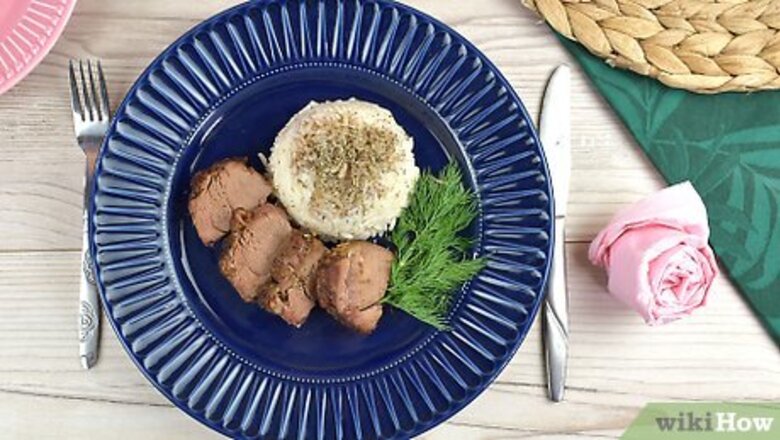
views
X
Research source
Which do you prefer?
European (Continental) Style

Know that the fork is on the left side of the plate and the knife is on the right. If you have more than one fork, the outer one is your salad fork and the inner one is for your main dish. The fork for your main dish will be larger than your salad fork. We'll cover table settings in the last section. For right now, let's concentrate on how to hold your utensils and get to eating! The "right" way, of course.
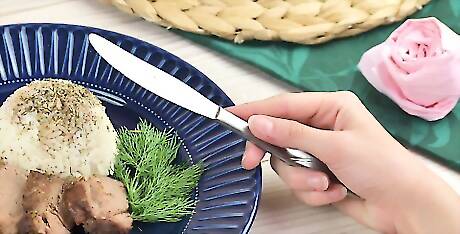
To cut into items on your plate, pick up and hold your knife in your right hand. The index finger is mostly straight and rests near the base of the top, blunt side of the blade. The other four fingers wrap around the handle. While your index finger is resting on the top, your thumb juxtaposes it on the side. The end of the knife handle should be touching the base of your palm. This is the same in both styles. And both styles cater to right-handers. If you're left-handed, consider reversing pretty much anything you read on this topic.
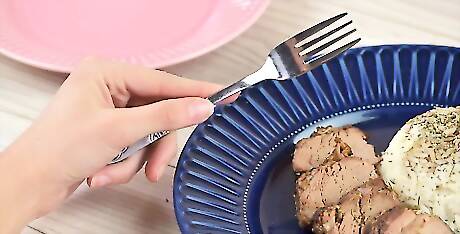
Hold your fork in your left hand. The tines (prongs) face away (downward) from you. The index finger is straight, and rests on the back-side near the head of the fork, but not so close you are in danger of touching the food. The other four fingers wrap around the handle. This is often referred to as the "hidden handle" method. This is because your hand is pretty much covering the entirety of the handle, secluding it from view. It might be easier to picture it this way: hold the fork by your index finger and your thumb, resting it on the third finger. Do not hold it at the top or at the bottom, but somewhere in the center.
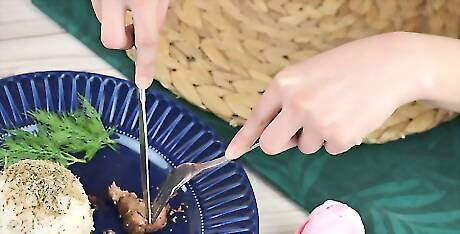
Bend the wrists, so that your index fingers are pointing down towards your plate. This makes the tip of the knife and fork also point towards the plate somewhat. Your elbows should be relaxed and not at all up in the air or uncomfortable. While we're at it, typically your elbows should be off the table at all times. But if you're taking a break from using your cutlery and in an informal setting, don't stress about it.
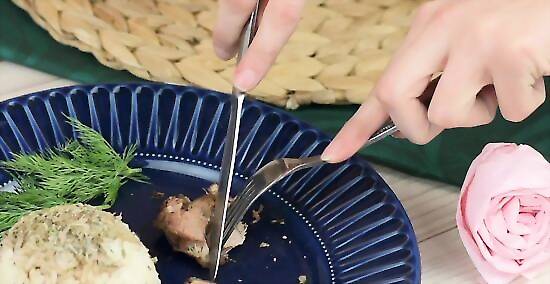
Hold the food down with the fork by applying pressure through the index finger. If you're cutting, place the knife close to the base of the fork and cut with a sawing motion. Foods like pasta will only require a swift, easy cut, while chewy meats will take a bit of work. Generally, only cut one or two bites at a time. Hold the fork so the tines (prongs) are curving toward you, with the knife further away from you than the fork. At an angle is fine, too -- just make sure you can see your knife clearly to know where you're cutting. You should be able to look over your fork to your knife.
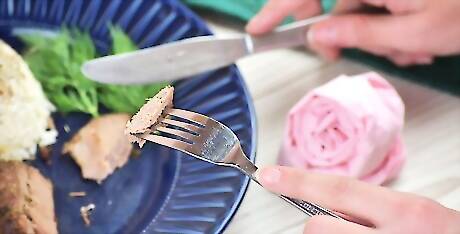
Bring smallish bits of food to your mouth with the fork. In this style of eating, bring the fork to your mouth with the tines curving downward. The back of the fork will be up as you bring it to your mouth. Keep the fork in your left hand, even if you're right-handed. You may find that this method is the more efficient of the two if you experiment with both. Never bend over the table to eat the food. Always bring the fork to your mouth.
American Style
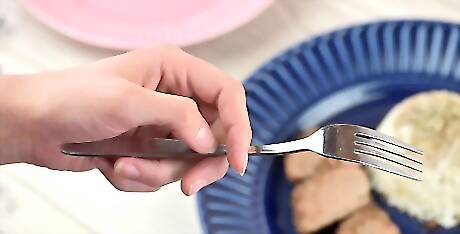
When cutting, hold the fork in your left hand. Unlike the Continental method, the American style of using a fork adopts more of a pen-like hold. The handle rests against your hand in between your thumb and forefinger, your middle finger and thumb are holding the base, and your index finger rests on top. Again, the tines are downward, curving away from you.
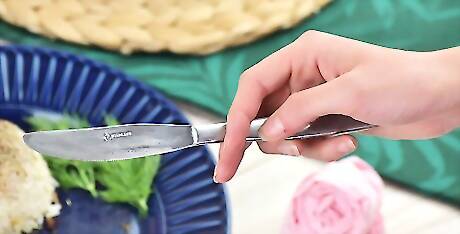
Only when cutting, place the knife in your right hand. This hand positioning is the same as in the aforementioned style -- with your index finger along the base and your other fingers wrapped around it.
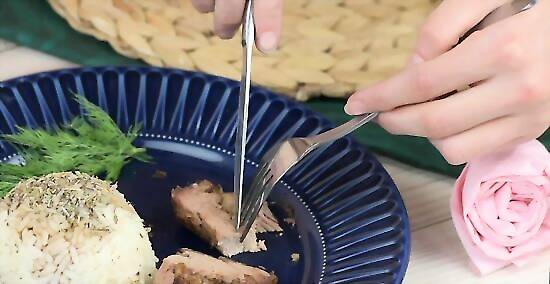
Make a cut. Hold the food down with your fork (tines down), cutting through with the knife in a gentle sawing motion. Your fork should be closer to you than your knife. Only cut one or two bites before continuing.
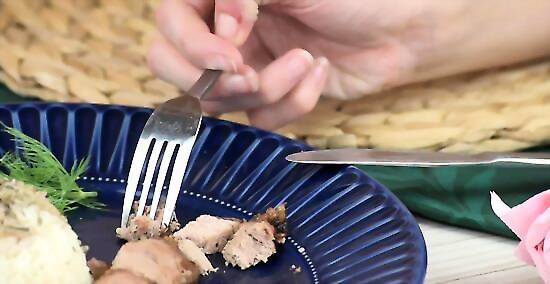
Now switch hands. Here comes the main difference between the two styles: after cutting a bite, put your knife down on the edge of your plate (blade at 12 o'clock, handle at 3 o'clock) and transfer your fork from your left hand to your right. Turn it so the tines are curving upward and take a bite! Tada. This is the method that was prevalent when America first became America. Europe used to use it, but has since moved on, favoring a more efficient approach. The jump hasn't quite made it across the pond, though there are pockets of difference everywhere.
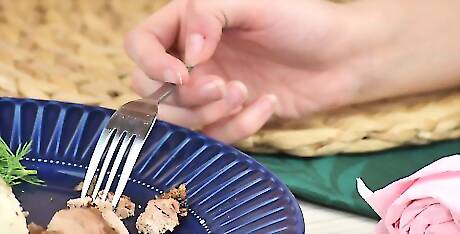
Apart from cutting, eat with your fork in your right hand, tines facing upward. If you are eating a dish that doesn't require cutting, keep your fork in your right hand at all times with this method. Tines can face downward if you're taking a bite, but will generally return upward for the majority of the time. However, do know that only in the absolute most formal of settings will this ever be an issue. We're talking when the President is sitting across from you. Other than that, don't stress. Your silverware should never touch the table. If you're only using your fork, be sure your knife is resting along the edge of your plate. When you put your fork down, rest the handle on the edge, tines near the center of the plate.
Dining Extras
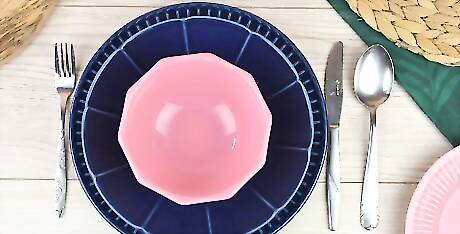
Understand the table set-up. For 95% of meals, you'll probably just be dealing with a knife, fork and spoon. But for those fancy occasions, you may see a few more pieces and wonder what the heck you should be doing. Here's a rough outline: A four-piece setting is a knife, a salad fork, a place fork (main dish), a place knife, and a teaspoon for coffee. The salad fork will be on the outside and smaller than your place fork. A five-piece setting is all that and a soup spoon. The soup spoon will be much larger than your coffee teaspoon. A six-piece setting is a first-course fork and knife (on the outside), main course fork and knife, and a dessert/salad fork and coffee teaspoon. Those last two will be the small ones. A seven-piece setting is all that and a soup spoon. The soup spoon will be much larger than your coffee teaspoon and isn't a knife or a fork. If you ever see a small fork on your right (forks generally never go on the right), it's an oyster fork. Utensils are generally placed in the order of their use. When in doubt, start from the outside and work your way in.
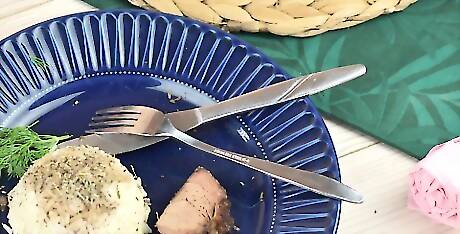
When you're just pausing between bites, place your silverware in a resting position. There are two different ways to signify to your waiter that you aren't finished: European style: Cross your knife and fork on your plate, fork over knife, tines facing down. The two should form an upside-down "V." American style: The knife goes near the top of your plate, blade at 12 o'clock, handle at 3 o'clock. The fork is placed tines upward, just at a slight angle from your body.
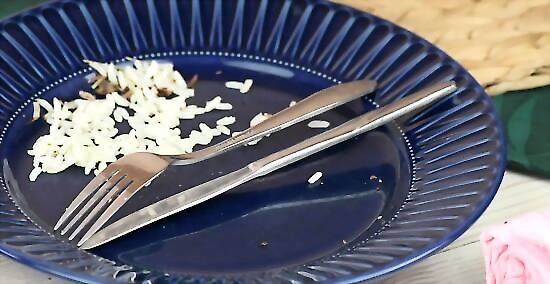
When you're finished eating, place your silverware in a completed position. This lets your waiter know your plate can be cleared (if he's in the know, that is). Again, the two schools of thought are: European style: Knife and fork parallel to each other, handles at 5 o'clock, blade and tines in the center of your plate (tines downward). American style: The same as European style, only the tines of the fork are facing upward.
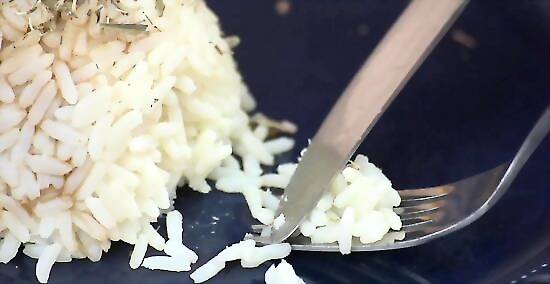
Get crafty with rice and other small items. You will need to pick them up by the fork in a slight scooping manner, rather than stabbing at them fruitlessly. The American style generally prefers to rely solely on the fork (again, less efficient), while the European style sometimes employs the help of the knife blade or a piece of bread for scooping.
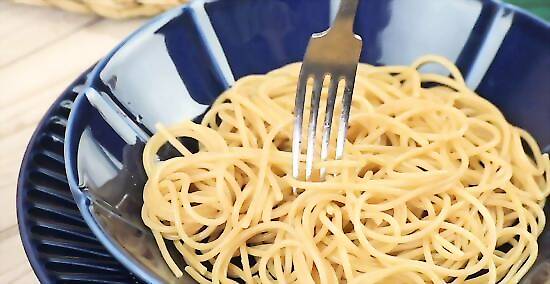
To eat pasta, twirl it with your fork. If you have a spoon, ensnare a few noodles with your fork and twirl them, resting on the base of your spoon. If the noodles are too long and are proving cumbersome, you can cut them with your knife if need be. But before you take any drastic measures, just try taking only a few noodles at a time. And make sure you have a napkin at the ready! If you're not good with pasta, you are in good company. It's messy for even the most seasoned of pasta-eaters at times. It's less about the knife and fork and more about not slurping!












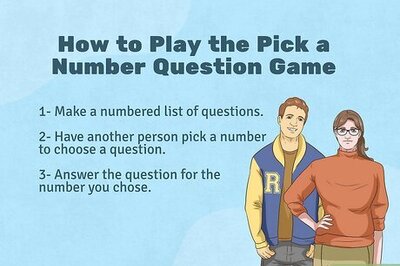







Comments
0 comment